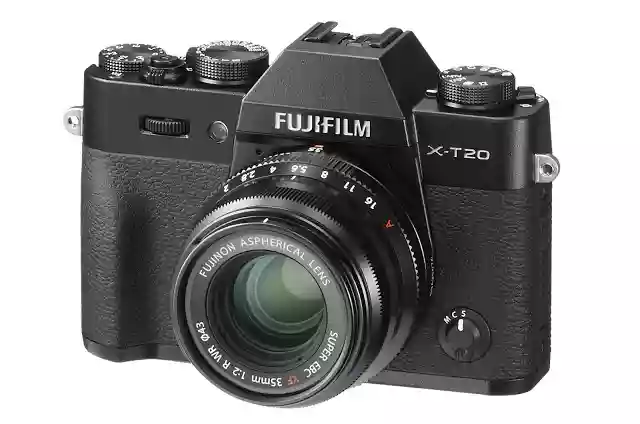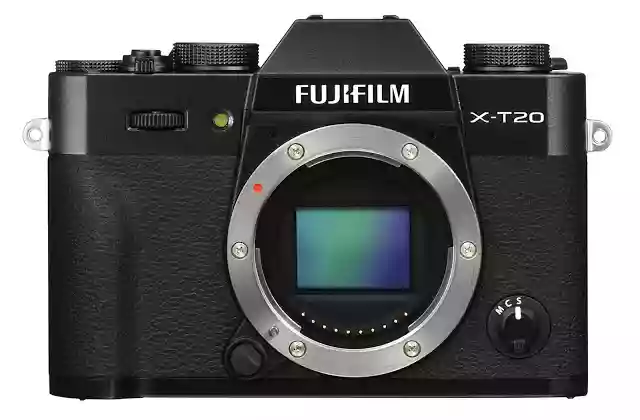- Call us: 01444 237070
- Contact Us
- Stores
- Sign In / Register
-
- Back
- Used Cameras
- Used Lenses
- Used Video
- Used Film Equipment
- Used Stock Alert
- Used Accessories
- Recently Added Used Equipment
- Used Clearance
- Faulty
- Park Picks
- Sell or Part Exchange
- Trade-In
- Blog
- New in
- Call us
- Contact us
- Stores
- Sign in
- Categories
- Tips & Inspiration
- Reviews
- News
- Events
- Features
- Buying Guides
- Competitions
Fujifilm X-T20 vs X-T10 Review
Today, Fujifilm have announced three new cameras, the Fujifilm X-100F, the medium format mirrorless GFX-50S and this, the Fujifilm X-T20.
The Fujifilm X-T20 makes a number of major improvements over its predecessor, the Fujifilm X-T10, so we've taken a look at some of the differences and what this means for you, the user.

Comparing the Fujifilm X-T20 vs Fujifilm X-T10
Image Quality & Sensitivity
The most obvious changes between the X-T20 and the X-T10 come in the highlight stats. The X-T20 comes with the latest 24.3 megapixel X-Trans CMOS III imaging sensor, whereas the X-T10 only had a 16.3 megapixel X-Trans CMOS II.
Additionally, the X-T20 comes with the new X-Processing Pro image processing engine, found in its latest X-Series cameras. This image processing engine delivers outstanding image quality with warm skin tones, bright blue skies and rich greens and the X-T20 now features a new ACROS Film Simulation mode.
ISO sensitivity in the X-T20 has been improves vs the X-T10 as well, thanks to the highly random pixel array on the X-Trans CMOS III sensor, ISO sensitivity has been increased to ISO 12,800 under normal conditions, expandable to 51,200.

No Low Pass Filter
Saying the Fujifilm X-T20 has 'no low pass filter' may sound like it's missing out on something, but what it actually means is that the X-T20 will capture more detail in its images vs the X-T10.
Low pass filters were designed by camera manufacturers to reduce or completely eliminate the effects of Moiré, the strange patterning or banding that occurs when there is a very fine repeating pattern in the image. It occurs when the image going through the lens onto the sensor reaches a frequency that is very close to that of the sensor grid. This often occurs with fabrics where the sensor resolution can’t handle the fine pattern.
However, the way a low pass filter works is by ever-so-slightly blurring the frequencies the sensor can’t deal with, which means the image is marginally less sharp than it could be.
As digital cameras have become higher and higher resolutions with bigger sensors, the number of fine patterns and frequencies in the real world that the sensors can’t cope with has become less and less, and therefore their usefuliness has also declined.
By doing away with them (note: they’re actually just redesigned, not removed), cameras like the Fujifilm X-T20 can capture more detail with less blurring at the edges of fine details.

Improved Autofocus Speeds and Functions
The Fujifilm X-T20 features some greatly improved autofocus speeds vs. the X-T10. Powered by the new X-Processor Pro image processing engine and utilising the higher resolution 24.3MP sensor in the X-T20, AF speeds have been improved to a blistering ultra-fast 0.06sec.
The improved processor in the X-T20 also allows for faster basic operations, which means the start up time is now only 0.4sec, the shutter time lag is only 0.05sec, and the shooting interval is only 0.25sec, vastly improved vs the X-T10.
Additionally, the X-T20 features an AF-C Custom Settings which lets you choose from five AF-C presets depending on how your chosen subject is moving. The AF algorithm has been improved vs the X-T10, resulting in a dramatic improvement when tracking a moving subject in the AF-C mode.
With the number of AF points up from 49 in the X-T10 to 91 in the X-T20, Autofocus has been greatly improved for shooting moving subjects thanks to a redesigned AF algorithm and double the coverage of Contrast AF area to 85%.

Video Recording Performance and Body Improvements
The Fujifilm X-T20 is a compact and lightweight mirrorless digital camera that's perfect for both stills and video. Now capable of 4K video recording at 30fps, this is a massive improvement vs the Full HD available in the X-T10 - that 4K video is going to look stunning thanks to the latest CMOS III sensor and X-Processor Pro image processing engine as well.
Additionally, the Film Simulation modes available for still photography are now available for 4K video in the X-T20, making it even easier to shoot beautiful, colour filled footage.
Video recording has been made vastly easier in the X-T20 too with the addition of a Video option to the Drive Dial to enable instantaneous switching from still photo shooting to 4K video recording.
Other body improvements on the X-T20 vs the X-T10 include a new C position on the Exposure Compensation Dial for adjusting exposure compensation up or down by 5 stops.

Fujifilm X-T20 vs Fujifilm X-T10 Specs Comparison
|
|
Fujifilm X-T20
|
Fujifilm X-T10
|
|
Megapixels
|
24.3MP X-Trans CMOS III
|
16.3MP X-Trans CMOS II
|
|
Video Recording
|
4K & Full HD
|
Full HD
|
|
Video Frame Rate
|
29.97fps (4K), 59.94fps (Full HD)
|
Max. 60 fps
|
|
ISO Sensitivity
|
ISO 200 – 12800
|
ISO 200 – 6400
|
|
Number of Focus Points
|
91 focus points
|
49 focus points
|
|
Focus System
|
Contrast AF + Phase Detection AF
|
Contrast AF + Phase Detection AF
|
|
EVF Size
|
2.36 million dot organic EL
|
2.36 million dot OLED
|
|
LCD Screen
|
Tilting
|
Tilting
|
|
Touchscreen
|
3.0 inch 1.04 million dot TFT LCD
|
3.0 inch, 0.92 million dot LCD
|
|
Memory Slots
|
Single SD
|
Single SD
|
|
Wi-Fi Capabilities
|
Yes
|
Yes
|
|
Weight
|
383g (including battery & card)
|
381g (including battery & card)
|
|
Dimensions
|
118.4mm x 82.8mm x 41.4mm
|
118.4mm x 82.8mm x 40.8mm
|
|
Battery Life
|
350 images
|
350 images
|
Fujifilm X-T20 vs X-T10 - What are the key differences?
The main differences between the Fujifilm X-T20 and the X-T10 are the new 24.3MP X-Trans CMOS III sensor, 4K video recording at 30fps, faster and more accurate autofocus with 91 AF points and a greater ISO sensitivity range. The Fujifilm X-T20 is available at Park Cameras for £799.
Buy the Fujifilm X-T20 Black or Silver body at Park Cameras for £799.
Further Reading
If you've enjoyed this article, you may be interested in our review comparison of the Fujifilm X100F vs X100T vs X100S.
Share this post:
By Park Cameras on 19/01/2017

Trade in your old equipment
Fast and easy trade in service ensures your old gear is collected efficiently and you are paid quickly! It's very simple to trade in your unwanted photography gear. Just head over to our dedicated Sell or Part Exchange page, fill out the details, and we'll get back to you with an offer for your old gear. Take the cash, or put it towards the cost of your new gear. It's up to you! Find out more
sign up to the newsletter
Keep up to date on the latest photography news, events and offers. Sign up now
